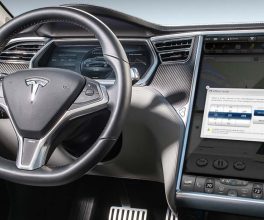For more than 100 years, the automotive industry has adapted to new technologies, evolving customer expectations and demographic shifts. Now more than ever, automotive manufacturers must continue to adjust their business models to succeed in today’s changing world.
Online companies like Amazon, Uber and Zappos have cultivated an on-demand mindset, creating consumer preferences that focus on access opposed to ownership. Leading brands like BMW, Cadillac, Mercedes, Porsche and Volvo – in addition to third party providers – have launched vehicle subscription services. Customers pay a monthly fee directly to the manufacturer for access to several vehicle models, and in addition to access, the fee covers insurance and maintenance. This model has fundamentally changed the car-buying process as we know it today – and the way consumers interact with their favorite automotive brands.
It’s clear that we are in the midst of a drastic change within the automotive industry, one that is forcing manufacturers to redefine the way they do business. Below are a few key tactics manufacturers can use to ensure the transition to car sharing services is as smooth and profitable as possible:
Maximize Product Uptime
Many manufacturers still adhere to the traditional break-fix model of service, where they reactively repair or replace parts after they have already failed. As vehicle subscription services continue to grow in popularity, automakers will need to transform their service organizations to a model focused on maximizing product uptime. They must invest heavily in predictive analytics and IoT solutions to redefine the way they manage service.
Because consumers are paying for access, automakers must stay ahead of demand. It’s time for manufacturers to adopt sophisticated, cloud-based solutions and new business processes to optimize service parts inventory levels while maximizing product uptime, which not only will lead to improvements in revenue, gross profits and operational efficiency, but also the overall customer experience.
Optimize Inventory Management
Currently, the break-fix model many manufacturers use today leads to long customer wait times due to poor part availability, excess stock and part obsolescence. This ‘just-in-case’ way of doing business most often creates overhead that negatively impacts both the customer experience and the manufacturer’s bottom line.
With subscription-based models becoming the norm, service parts inventory management is key to ensuring that replacement parts are available when and where they are needed. To succeed, manufacturers must invest in both human capital and technology to fully optimize the service parts supply chain. While Microsoft Excel spreadsheets and legacy ERP systems may have been helpful for managing service parts in the traditional after-sales service model, using these outdated tools is no longer sufficient to meet customers’ needs for maximized product uptime.
Cloud-based service parts management solutions easily integrate into existing ERP systems, allowing manufacturers to track service parts, eliminate excess and obsolete stock and forecast when new parts are needed. These practices are critical for meeting customer expectations in the vehicle subscription era.
Make Data Actionable
As cars become ‘smarter’ with more sensor-equipped parts, manufacturers must use the massive amounts of data they are collecting to improve the customer experience. To maximize product uptime and ensure vehicles are always up and running, automakers must invest in the right technologies to truly make data actionable.
The backbone of all efforts to optimize the service supply chain is big data. Gathering, analyzing and using data provides manufacturers with previously unimaginable advantages – giving them the tools they need to reduce excess spend, maintain equipment, meet increased demand and so much more. With the help of IoT, manufacturers can predict the future, target individual consumers and scale rapidly.
Car sharing will certainly change the way consumers interact with their favorite automotive brands. Manufacturers must ensure customers are always satisfied, redefining their service organizations to meet these new demands.
Gary Brooks is CMO at Syncron.
Author – Gary Brooks
Courtesy of MNET

























































